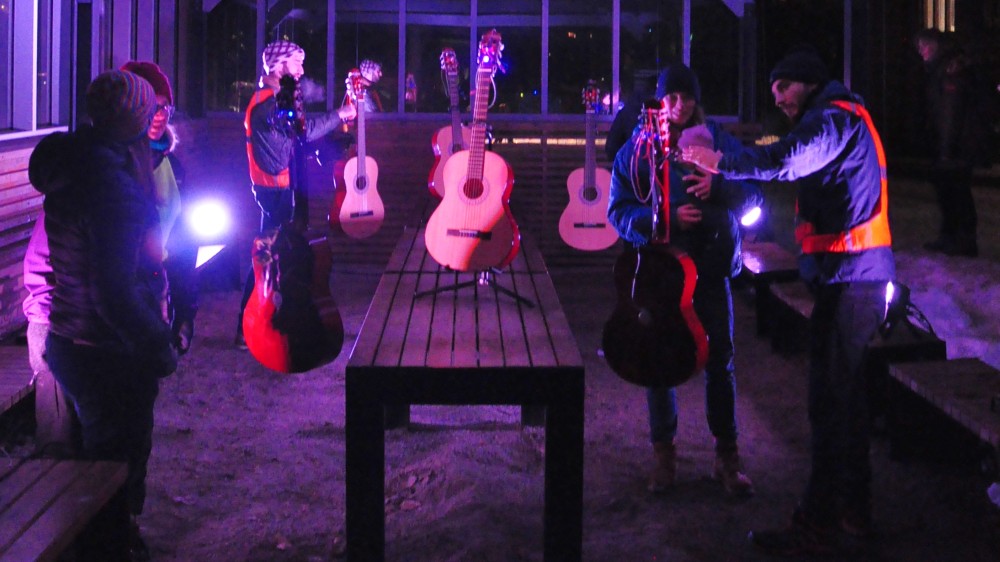How are humans able to follow a common pulse? Or act rhythmically together? RITMO researchers explore the phenomenon of entrainment, the ability to synchronize to each other. This is something that all humans (and other biological systems) do all the time. Yet, there are many things we do not understand about how it is done and the cognitive processes involved. It is also challenging to make computer systems that can do the same. That is what we are trying to do now.
Conceptual information
In this installation, we explore how six self-playing guitars can entrain to each other. When they are left alone, they will revert to playing a common pulse. As soon as they sense people in their surroundings, they will start entraining to other pulses. The result is a fascinating exploration of a basic physical and cognitive concept and the musically interesting patterns that emerge on the border between order and chaos.
We encourage participants to hold the guitars to feel their resonance and to interact with the tones being played. The living body interacts with an electronic sound system played through the acoustic instrument. In this way, the installation explores the tactile and kinesthetic meeting points, the body and the mind, and between motion and sound.
Technical information
Each of the guitars is equipped with a Bela micro-computer, which produces electronic sound through an actuator placed on the back of the guitars. There are no external speakers; all the sound generation is coming from the vibration of the acoustic guitar. The sound is created through a physical model (the Karplus Strong algorithm). The guitars listen to their environment through a microphone and use a Firefly-inspired algorithm to entrain each other. The pitch of the tones and colour of the light is controlled through an infrared distance sensor.
























